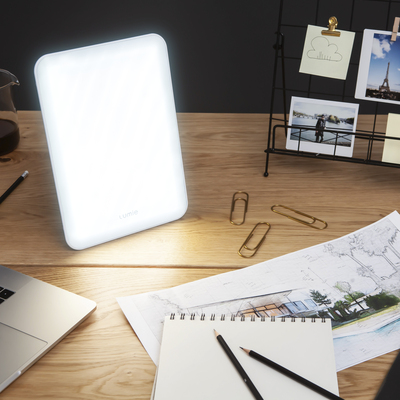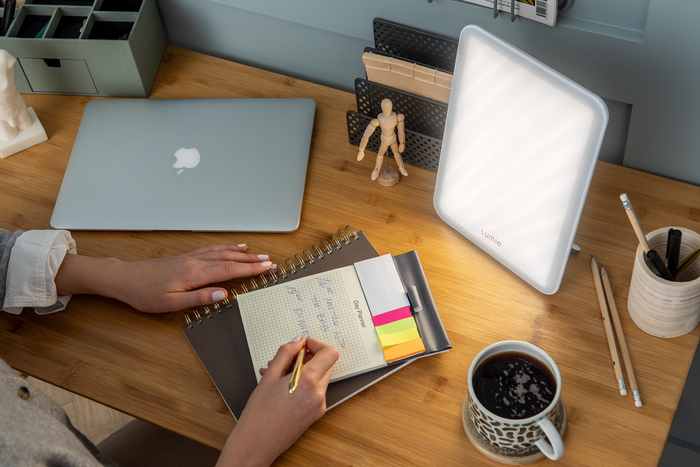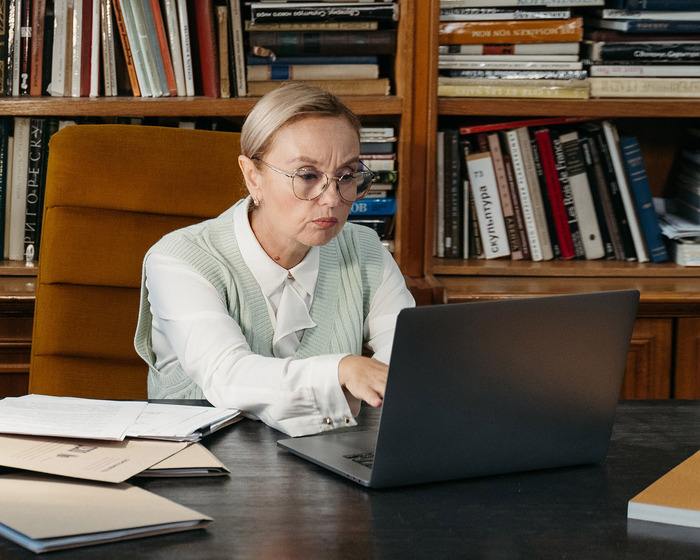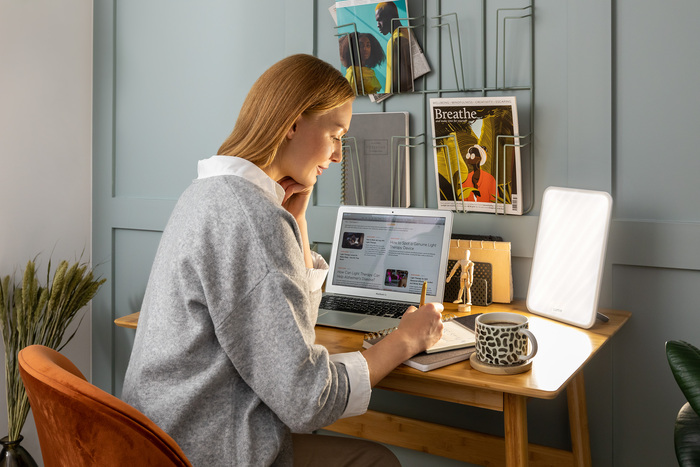Light Therapy in the Workplace: Increase Productivity and Well-being of Your Employees

According to the Mental Health America's Mind the Workplace 2022 Report, managing stress and balancing professional and personal demands continues to be a prominent issue for employees. In 2021, 80% of employees agreed that the stress from work affects their relationships with friends, family, and co-workers. Often, especially in unhealthy and unsupportive workplaces, such stress leads to larger mental health concerns, interrupting employees’ daily activities. Furthermore, an employee’s poor (and unmanaged) mental health can result in burnout, ‘absenteeism’ (people regularly staying away from work without good reason), ‘presentism’ (people working when unwell) or ‘leaveism’ (people using allocated time off to work), losing interest in a job, or - at times living in general. It is reported that “employees in nearly 40% of the least healthy workplaces are more likely to seek other professional opportunities compared to 10% of employees in the healthiest workplaces.
Employee expectations have shifted rapidly in recent years, emphasizing the employer’s responsibility for the well-being of their workforce. Put simply, employees expect more from their employers, and organizations that don’t prioritize good well-being risk much higher staff-turnover rates and score lower when it comes to productivity and engagement. Thanks to this recent report, we know that companies with a highly engaged workforce are 21% more profitable, which provides a very motivating and meaningful statistic in support of the importance of workplace wellbeing. Furthermore, the 2021 U.S. Employee Benefit Trends Study from MetLife found that employee well-being is predicted to have the greatest impact on the workplace of the future (74%).
Good well-being of employees at work begins with a good working environment, one that strives to have not just no negative impact on one’s health, but in fact, one that promotes wellness. Leah Stringer, workplace strategy expert and author of 'The Healthy Workplace' aptly states that ”human health should be the foundation of workplace design and of business because companies thrive on the innovation and abilities of their people, and if employees are sick, overweight, stressed, sleep-deprived or disengaged, they prevent the company they work for from thriving and maintaining a competitive advantage in the marketplace.”
Humans truly do depend on light; it is a natural stimulant that helps us feel positive, upbeat and full of life. It's also an important factor for our overall physical well-being as it keeps our circadian rhythm on track so that our daily rhythms (i.e. when we eat and sleep) and mood are aligned. Sounds pretty intuitive, right? Yet a large percentage of our lives we are deprived of sufficient exposure to bright light, which can lead to some serious mental health complications. The 2018 Lancet Psychiatry study of 91,000 people found that a disrupted body clock was linked with higher rates of major depression, bipolar disorder, more loneliness, lower happiness, worse reaction times, and more mood instability.
The issue of sufficient exposure to bright light is particularly striking in fall and winter, when, if an employee works in a poorly lit office and takes no time to go outside at midday for at least half an hour, they will virtually see no daylight whatsoever. For optimum mood and energy, we all need light as bright as a spring morning on a clear day for around 30 minutes a day and the light must be at least 2,000 lux (the technical measure of brightness). That's roughly four times brighter than even a well-lit office, let alone a poorly lit one! Looking into this matter in more detail, researchers from the University of Illinois, Chicago and the Institute of Technology in Taiwan teamed up to investigate the role of workplace windows in aiding sleep and therefore regulating body clocks. Their study found that "workers in offices with windows not only had significantly more light exposure during work hours but also slept an average of 46 minutes more per night during the week than those without access to windows. Office workers with more light exposure at the workplace also tended to have better sleep quality, more physical activity and a better quality of life".
Lighting interventions for better health and well-being are becoming more and more popular in our always-on, 24/7 urban cultures. In environments (or at certain times of the year) where exposure to strong daylight is insufficient, bright light therapy delivered by lamps such as Vitamin L is the next best thing. It has been shown to play a crucial role in regulating sleep/wake cycles, synchronizing circadian (daily) clock, boosting mood, alertness, performance, and focus, as well as helping alleviate the symptoms of winter blues.

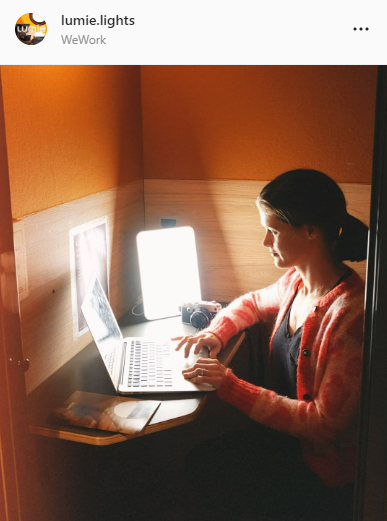
Having carried out several light therapy pop-ups at co-working spaces and universities, we regularly receive great feedback. In January 2019 we installed Vitamin L lights in windowless phone booths at WeWork in Devonshire Square in London during their Well-being Week. Most respondents to our short survey noticed improvement to their ability to think clearly, and had seen a boost to their mood, energy levels, performance and enthusiasm within one 30-minute session. One of the notes we received said “These should be in every booth during the winter”.
Bright light therapy lamps could become a permanent fixture in canteens, common areas, or wellness hideaways, encouraging employees to eat lunch or take time to recharge with a mid-morning cup of tea in the powerful glow of Vitamin L. Slim and portable lamps like these could be made available to employees to use at their desks or when working from home (a great corporate gift idea, btw!), giving the individuals the freedom to experiment with timing and duration of their sessions to see what works best for them.
Providing bright light therapy and reinforcing the narrative of the positive effect light has on individuals helps lift the stigma surrounding seasonal depression and therefore provides support to those suffering. It allows the employers to improve the working conditions, particularly in spaces that are deprived of access to daylight, and, with the help of surveys or feedback forms, it allows the organizations to monitor what influence introducing light therapy has had on their employees.
